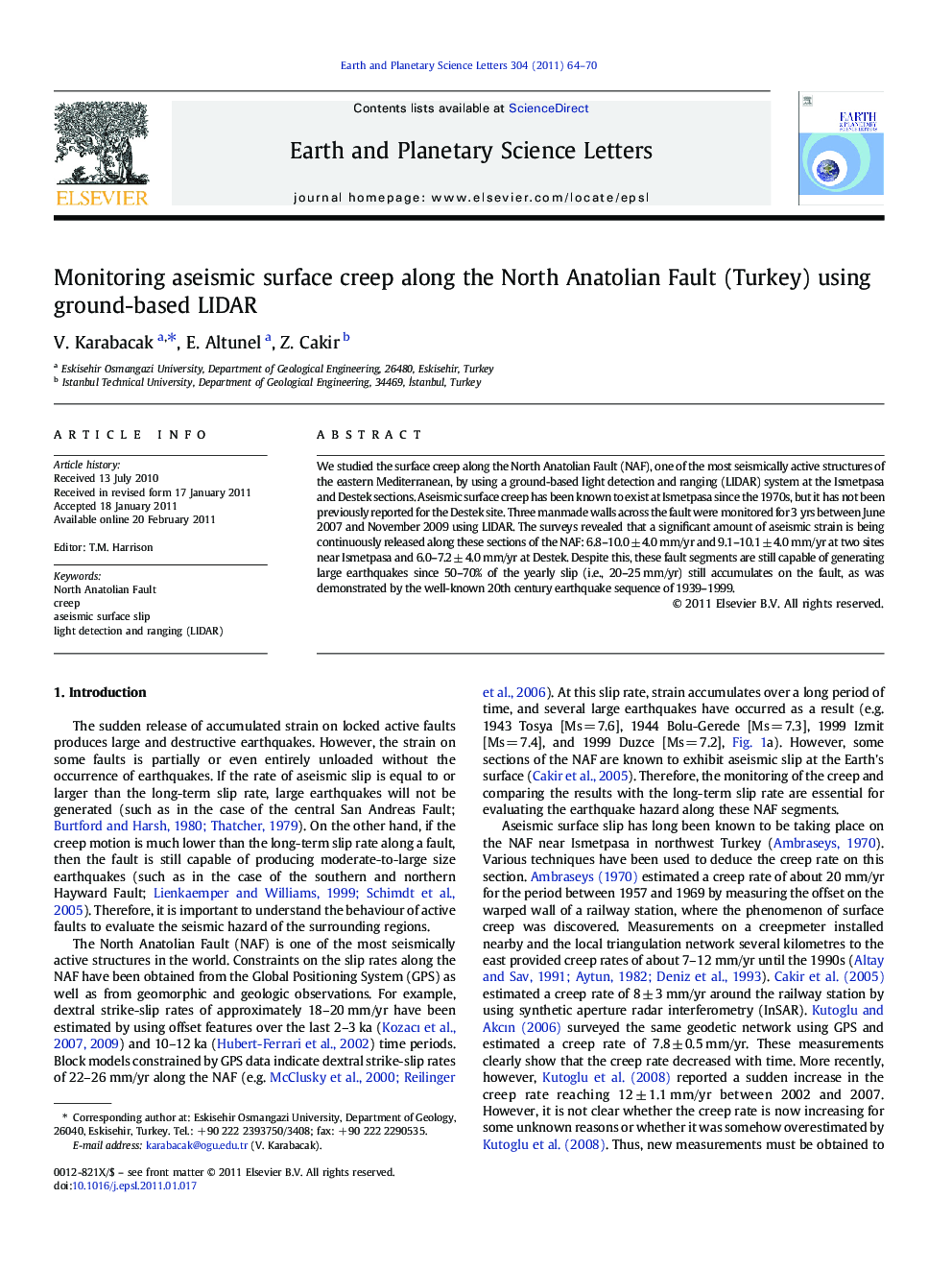| کد مقاله | کد نشریه | سال انتشار | مقاله انگلیسی | نسخه تمام متن |
|---|---|---|---|---|
| 4678197 | 1634832 | 2011 | 7 صفحه PDF | دانلود رایگان |

We studied the surface creep along the North Anatolian Fault (NAF), one of the most seismically active structures of the eastern Mediterranean, by using a ground-based light detection and ranging (LIDAR) system at the Ismetpasa and Destek sections. Aseismic surface creep has been known to exist at Ismetpasa since the 1970s, but it has not been previously reported for the Destek site. Three manmade walls across the fault were monitored for 3 yrs between June 2007 and November 2009 using LIDAR. The surveys revealed that a significant amount of aseismic strain is being continuously released along these sections of the NAF: 6.8–10.0 ± 4.0 mm/yr and 9.1–10.1 ± 4.0 mm/yr at two sites near Ismetpasa and 6.0–7.2 ± 4.0 mm/yr at Destek. Despite this, these fault segments are still capable of generating large earthquakes since 50–70% of the yearly slip (i.e., 20–25 mm/yr) still accumulates on the fault, as was demonstrated by the well-known 20th century earthquake sequence of 1939–1999.
Research highlights
► LIDAR technology can be successfully applied to determine surface creep.
► A new creeping section along the North Anatolian Fault was recognised.
► 50–70% of the yearly slip still accumulates on the North Anatolian Fault creeping sections.
Journal: Earth and Planetary Science Letters - Volume 304, Issues 1–2, 1 April 2011, Pages 64–70